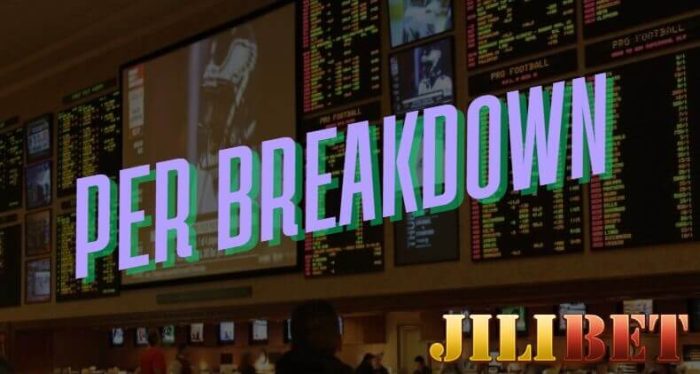The world of sports betting is a fascinating arena, a microcosm of human psychology and the unpredictable nature of competition. While the allure of backing the heavily favored team or athlete is often strong, the potential for significant rewards lies sometimes in the surprising victories of the underdogs.
At JILIBET, we get it—everyone loves a star team, MVP players, and dynasties. Betting on the favorite feels safe and easy. But if you’re always siding with the crowd, your bets are probably overvalued and not giving you real returns.
This article dives into why underdog bets aren’t just fun—they’re often smarter, savvier plays. Whether it’s a +8.5 spread or a +300 moneyline, the real pros know: the value lives with the dark horses.
The Psychology Behind Overrated Favorites
The thrill of the long shot, the underdog’s improbable triumph, has captivated sports fans and bettors for generations. This fascination stems from several interconnected factors. The implied probability, often skewed by the oddsmakers, can present an opportunity to capitalize on a perceived mispricing of the outcome. Favored teams, often perceived as superior, can be overvalued, leading to inflated odds that undervalue the potential for an upset.

Bookmakers know you love the big-name teams. That’s why the lines on favorites are often inflated.
Why does this happen?
- Fans project emotional bias onto star players.
- Casual bettors overestimate blowouts and underestimate close games.
- Media hype creates public imbalance, which shifts the lines.
So while everyone’s chasing the favorites, smart bettors are chasing value—and value lives in the numbers, not the headlines.
How to Spot a Live Underdog
The essence of betting on an underdog lies in the opportunity to capitalize on misjudgments made by bookmakers. Oddsmakers often favor perceived stronger competitors—teams or players with better stats and past performances—leading to skewed odds. This is where savvy gamblers can find value. By meticulously analyzing matchups, considering hidden variables, and utilizing their betting acumen, bettors can identify instances where the underdog offers a greater return than their odds suggest.
Not every underdog is worth your money—but some are hidden gems that the market just hasn’t caught up to.
Look for signs like:
- Solid recent form, even if the win-loss record doesn’t show it.
- Key players returning from injury, not yet reflected in the line.
- A playing style that counters the favorite’s strengths.
- A home underdog getting +5 or more—home-court advantage is huge.
Also, if the favorite is on a back-to-back game, fatigue could distort the line in your favor.
Why Underdogs Cover the Spread More Often
Oddsmakers employ sophisticated statistical models to project probabilities of outcomes. However, these models are only as good as the data they are built upon, and they can sometimes fail to account for crucial factors that might tip the scales in favor of the underdog. For instance, a team’s recent performance, injuries to key players, or even the psychological impact of playing against a perceived superior opponent can all be underappreciated or overlooked. These market inefficiencies, often subtle and difficult to detect, can create opportunities for shrewd bettors to capitalize on mispriced odds.
Statistically, underdogs beat the spread more often than favorites. Why?
- Oddsmakers set lines to balance bets—not to predict exact scores.
- Favorites get overloaded with public money, pushing spreads too high.
- When games are tight, the underdog cashes the ticket.
The Real Underdog Value Is on the Moneyline
Underdog moneyline odds usually sit between +200 and +400. Hit one, and you’ve likely covered several losing bets.
Here’s how to play it smart:
- Split your bet—half on the spread, half on the moneyline.
- Look for spots like injury-plagued opponents, home underdogs, or slumping favorites.
And honestly, rooting for the underdog just feels better. It’s not just about the payout—it’s about the story, the suspense, and the adrenaline rush. That one upset win can turn into a core memory. Betting the dog isn’t just a strategy—it’s an experience.
When to Avoid the Underdog
Not all underdogs are created equal. Stay away in these situations:
- The line is moving sharply toward the favorite—something’s up.
- Your underdog is clearly outmatched physically or athletically.
- They’re terrible on the road.
- They just pulled off a big upset and are now overhyped.
If you want to be successful betting against favorites, you need to mix up your methods. Try point spreads, moneylines, and prop bets to express your edge in different ways. Each offers unique risks and returns.
Advanced Move: First-Half Underdog Bets
If you’re unsure how the full game will play out, try taking the underdog just for the first half.
Here’s why it works:
- Dogs often start strong before depth or fatigue kicks in.
- Favorites tend to be slow starters.
- Bookmakers are less precise setting first-half lines.
It’s a lower-risk way to bet the underdog and often comes with juicy value.
Don’t Parlay Underdogs Recklessly
Parlaying underdogs sounds exciting, but one miss can wreck the whole bet. Instead, try single bets or use round-robin betting to spread the risk.
Conclusion: Smart Money Backs the Dog
Betting on underdogs isn’t about blind hope—it’s about exploiting market inefficiencies. When you see through the hype and spot real value, you’re not a gambler—you’re a hunter.
So next time you see a team that’s flying under the radar, don’t be afraid to take the shot. You’re not betting on a miracle. You’re betting on math.
However, it’s essential to acknowledge the inherent risk and manage your expectations. The pursuit of the underdog’s triumph demands a keen eye for detail, a willingness to embrace the unexpected, and a healthy dose of strategic thinking.


